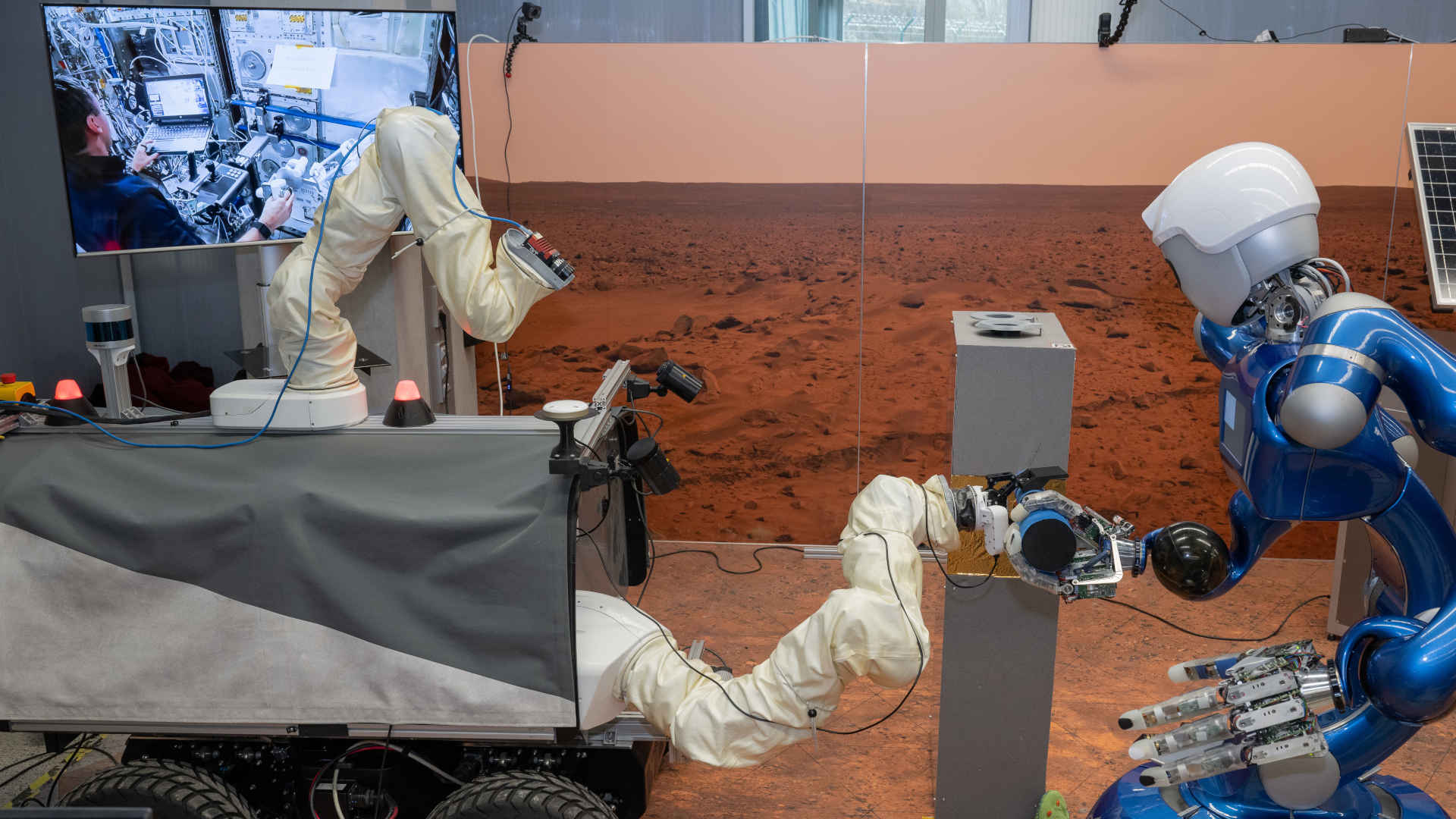For the first time in the history of robot dogs and space travel, a four-legged robodog has been controlled by a human outside of the Earth’s atmosphere. Only robots with wheels have been controlled remotely from space before now.
The “Surface Avatar” test carried out in January saw European Space Agency (ESA) astronaut Marcus Wandt control several different robotic systems on Earth from the International Space Station (ISS), part of a project that eventually aims to allow human commanders to control robots on other worlds like the Moon or Mars while in orbit around them.
Wandt controlled a dog-like robot named Bert created by the German Aerospace Center (DLR). The robot has legs designed to walk on several different kinds of terrain that may not be accessible with wheels, as well as explore small caves inaccessible to its human colleagues.
While Wandt controlled the robodog, allowing it to explore DLR’s Mars laboratory and monitor the “terrain” with its camera eyes, he also turned his attention to two other robots: DLR’s Rollin’ Justin, a humanoid service robot, and ESA’s Interact rover. Following on from previous experiments that explored how time delays may affect controlling a robot from space, this time saw the two robots work together to perform a task, installing a short pipe.

ESA astronaut Marcus Wandt was able to sensitively control the robots in DLR’s Mars laboratory from the ISS.
Image credit: DLR
“Even between humans, cooperation is complex. Agreements have to be made and mutual intentions understood. This is a particular challenge when different robots have to form a team and successfully complete a task together,” DLR explained in a statement.
“When building a habitat, for example, combining the different skills of several robots is very helpful. In the first experiment of its kind, DLR’s humanoid robot Rollin’ Justin and ESA’s Interact Rover mastered such a task and jointly installed a short pipe representing a scientific measuring device.”
Controlling a robot you aren’t even on the same planet with is only part of the goal, with the team hoping that astronauts will one day be able to control several robots on a mission, either having them act semi or fully autonomously as required.
“Future stations on the Moon and Mars, including astronaut habitats, will be built and maintained by robots operating under the guidance of astronauts,” explained Alin Albu-Schäffer, Director of the DLR Institute of Robotics and Mechatronics. “Our latest control and AI algorithms enable a single astronaut to command an entire team of different robots.”
Source Link: Robot Dog Controlled By Someone Not On Earth For The First Time In History